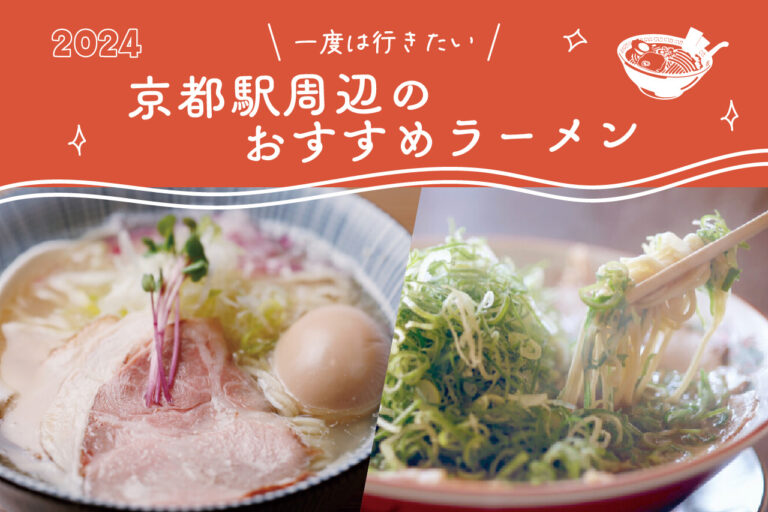
You want to go there at least once! 18 Ramen restaurants near Kyoto Station [Walk...
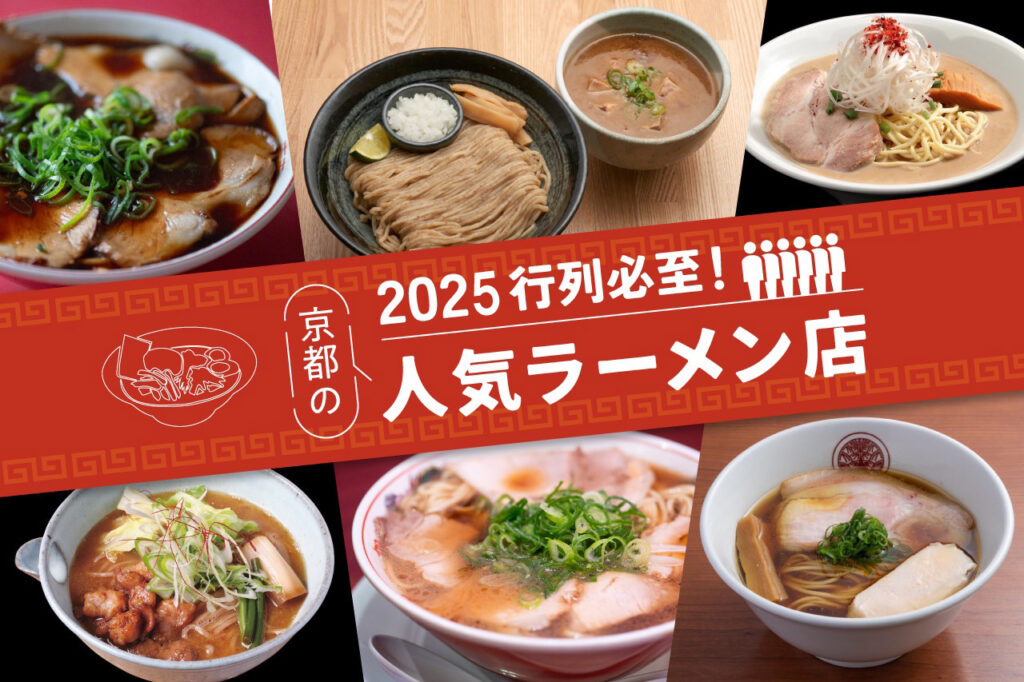

Kyoto is known as one of the most competitive ramen areas in Japan. Kyoto is known as one of the most fierce ramen battlegrounds in Japan, and ramen lovers gather from all over the country to taste a wide variety of ramen, from long-established favorites to newer styles. We have selected popular ramen restaurants located in Kyoto Station, Kawaramachi, Ichijyoji, and other areas of Kyoto that you should not miss if you visit Kyoto. Let's go on a ramen tour in search of your ideal flavor. The numbers in front of the store names are not in the order of recommendation or ranking. (TEXT/Hana Toba, Koto Sakurai, EDIT/Moe Sawamura, Miki Tamura)
Honke Daiichi-Asahi Honten" was established shortly after the end of World War II and has been welcoming people at the entrance to Kyoto. The lines that form early in the morning can be said to be a Kyoto specialty. The ramen is pork-based and soy sauce-flavored, and the soup is made by cooking it in a short period of time to extract only the flavor, which goes well with the medium-thick noodles made from a blend of several flours and aged to dryness. The noodles are made by Kondo Seimen, the soy sauce by Gokou Soy Sauce, and the kujo onions and mung bean sprouts are also from Kyoto. It is truly a bowl of condensed local delicacies.
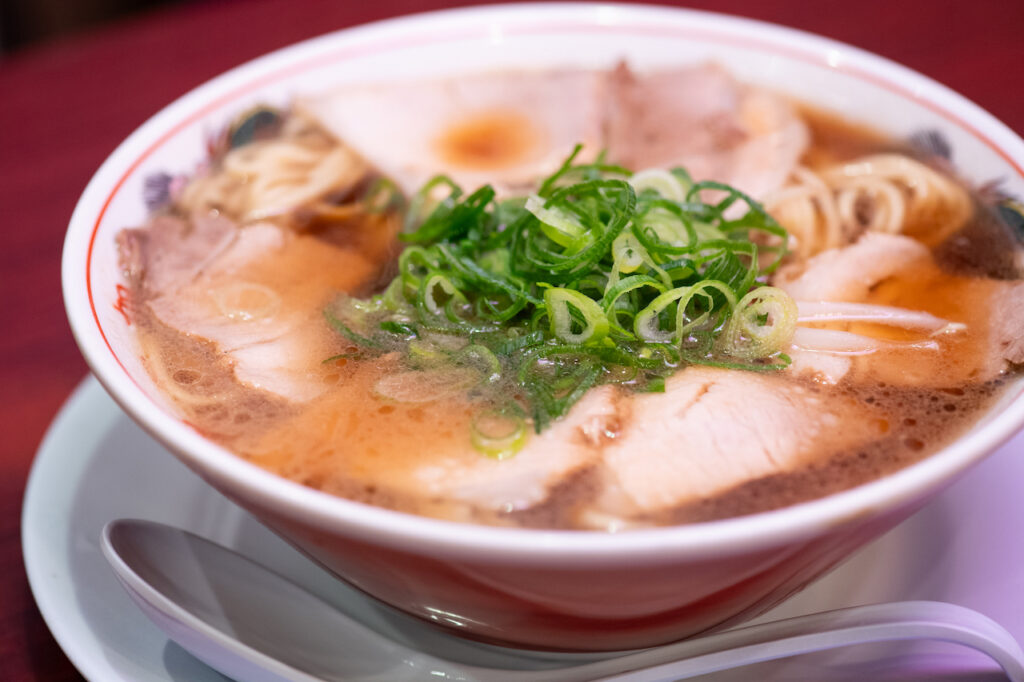
Ramen 940 yen. Only pork with a perfect balance of fat and meat, called "Chudaikan," is used for the roasted pork. The noodles are refreshing to the taste and have a good firmness.

RAMEN DATA
▶︎ Tare (Kaeshi) / Soy sauce
▶︎ soup/pork bone
▶︎ noodles/medium-thick straight noodles
Shinpuku Sankan started out as a Chinese noodle stall in 1938 and has since expanded nationwide. It is one of the most famous restaurants in the history of ramen in Kyoto. The main store is visited not only by locals but also by fans from all over the country, with lines forming from the time the store opens at 9:00 a.m. The distinctive feature of the ramen is the dark-colored Chinese noodle soup. The original soy sauce broth is simple but has a lingering taste that makes you want to eat it again and again. The fried rice, which has many fans, must be ordered together with the Chinese noodles.
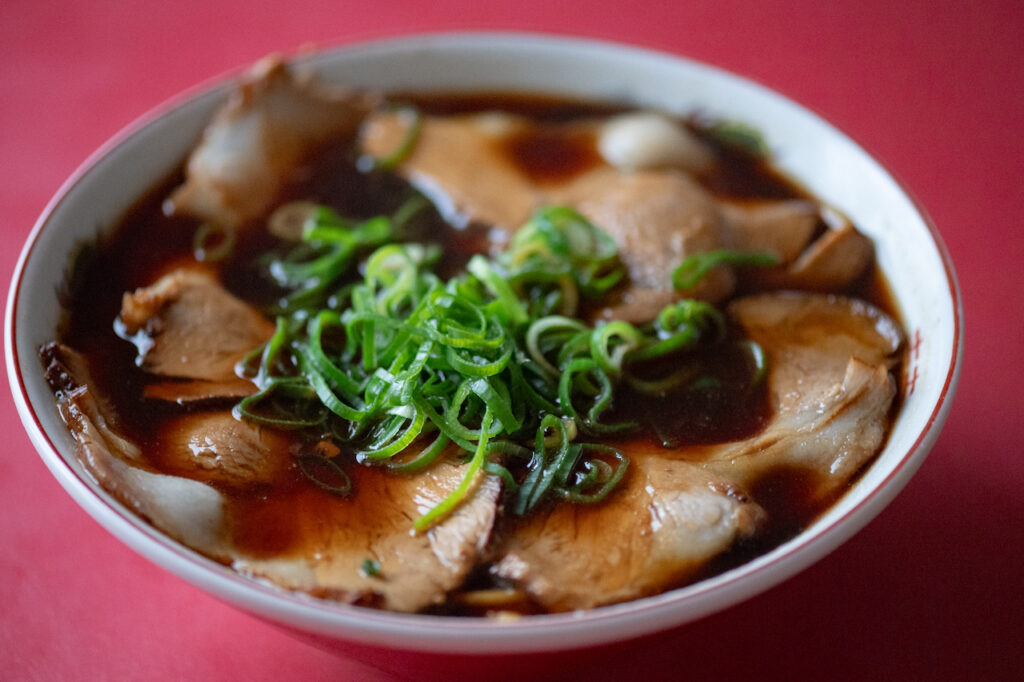
Chinese noodles (ordinary) 850 yen. Medium-thick straight noodles topped with green onions, bean sprouts, and chashu pork. The soup is dark in color, but surprisingly light.

RAMEN DATA
▶︎ Tare (Kaeshi) / Soy sauce
▶︎ soup/pork bone, chicken bones
▶︎ noodles/medium-thick straight noodles
Inoichi Menya has been selected as a Michelin Bib Gourmand restaurant for nine consecutive years. The reason for its popularity is its soup, which is made from 100% seafood broth without using any animal fat such as pork or chicken. The broth is made by blending several kinds of carefully selected top-quality fish knots and extracting them slowly at a low temperature, and is full of seafood flavor. The homemade noodles, made of stone-ground whole wheat flour, are thin but firm, and go well with the soup.
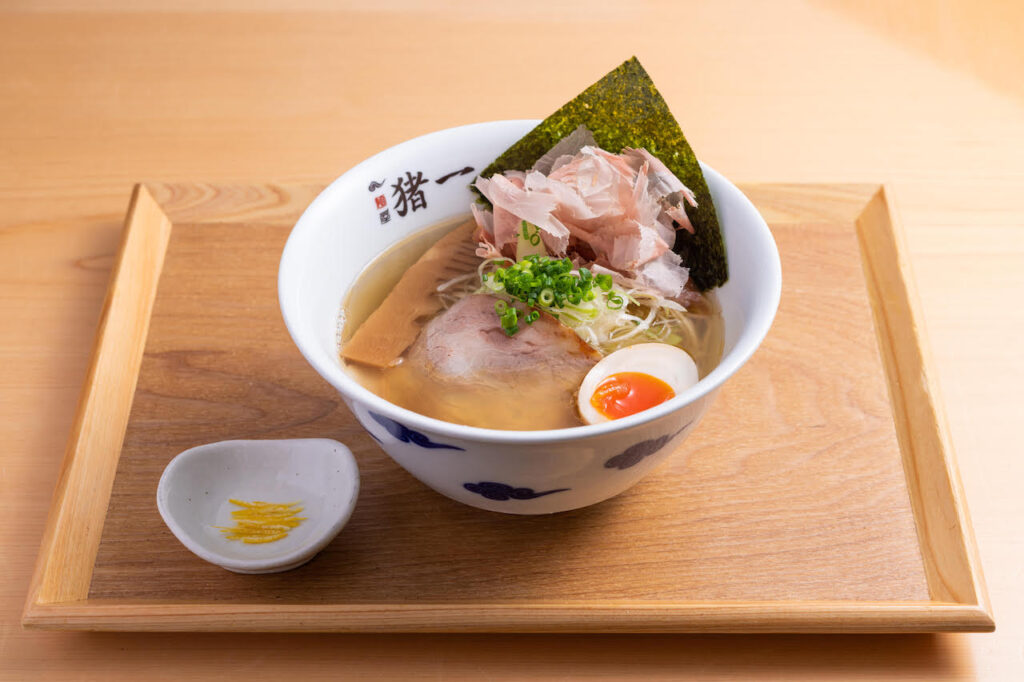
Dashi-soba (white soy sauce) 1,400 yen. Topped with a homemade akadama (half ball) seasoning (150 yen). The unique sweetness of white soy sauce matches the 100% seafood broth.

RAMEN DATA
▶︎ Tare (Kaeshi) / Soy sauce
▶︎ soup/seafood
▶︎ noodles/straight thin noodles
This is the third branch of "Menya Takakura Nijo," which draws a long line every day. The restaurant is located in a traditional Kyoto townhouse and serves "Motsusoba" with freshly seared and savory motsu (small fish balls). The toppings, which are seared after the order is placed, add to the richness and flavor of the soup, which is made from a large amount of chicken stock and dried sardines. The fresh, plump motsu goes well with the cabbage and green onions. We also recommend adding a raw egg to make it sukiyaki style.
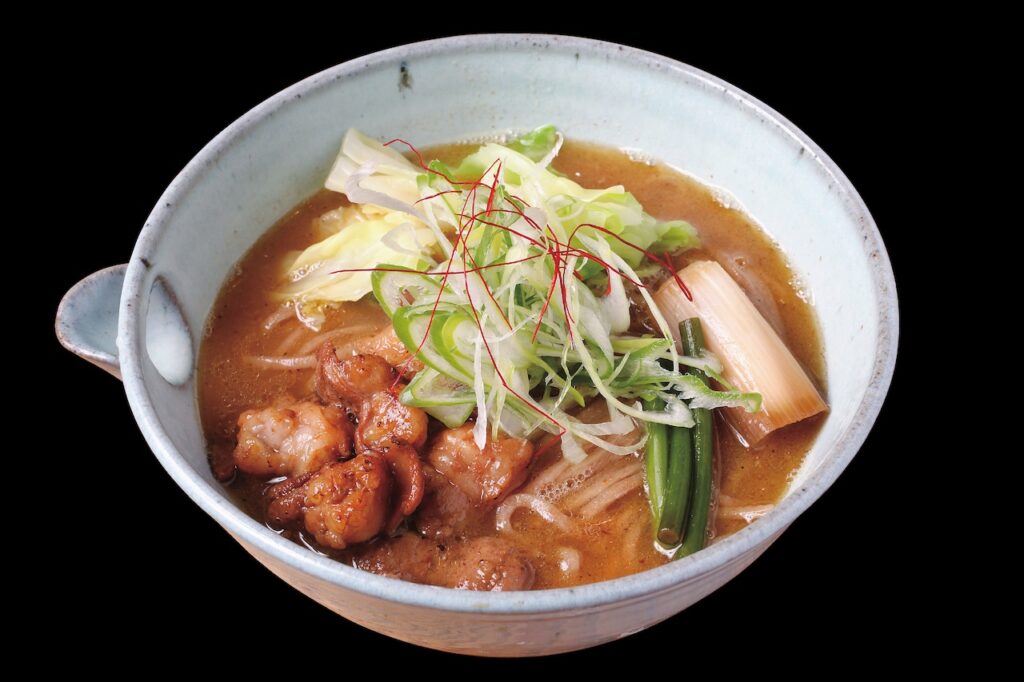
Motsuba Soba Noodle 1,200 yen. Flavorful homemade whole wheat noodles have a unique chewy texture and go well with the soup!

RAMEN DATA
▶︎ Tare (Kaeshi) / Soy sauce
▶︎ Soup / Chicken stock, dried sardines, soy sauce
▶︎ noodles/medium-thick straight noodles
Menya Sanda is owned by the owner, who trained at the famous Ginjo Ramen Kubota for about seven years. The signature dish, tsukemen (dipping noodles in chicken white soup), features a soup made with only chicken and water to create a clean flavor. The chicken is carefully prepped and no unnecessary ingredients are added, resulting in a flavorless finish. Although the soup is thick and rich, there is no lingering odor or heaviness, and it has a reputation for a flavor that one never gets tired of.
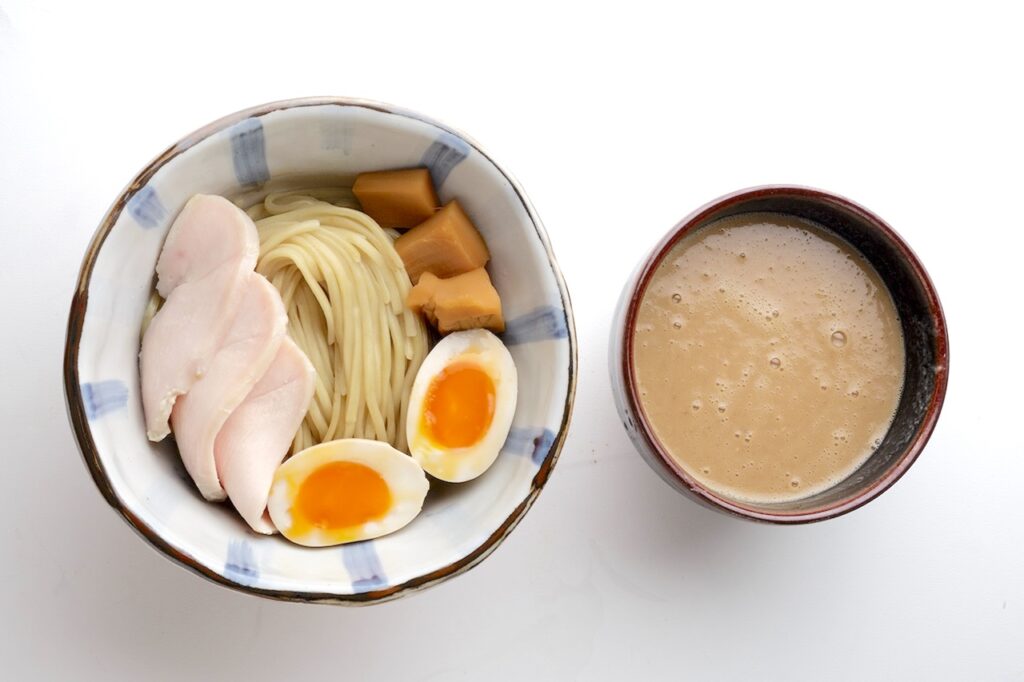
Tsukemen is available for 1,000 yen, topped with a half-boiled egg for 100 yen. The flavorful homemade noodles kneaded with roasted embryo buds are also noteworthy!

RAMEN DATA
▶︎ Tare (Kaeshi) / Soy sauce
▶︎ soup/chicken
▶︎ noodles/straight thick noodles
Ra-men Tohichi is famous for its Seiyu Ramen made with Nama-age Soy Sauce, which is more aromatic and has a stronger flavor than ordinary soy sauce. The special sauce, which makes the most of the complex flavor of nama-age soy sauce, is combined with a broth made by simmering the bones of Tanba black chicken, Akita hinaichidori chicken, and other chickens over low heat for a long period of time. The beautifully clear appearance of the broth is not what one would expect from the concentrated flavor of the chicken. The noodles that go well with the soup are also homemade in pursuit of firmness and chewiness.
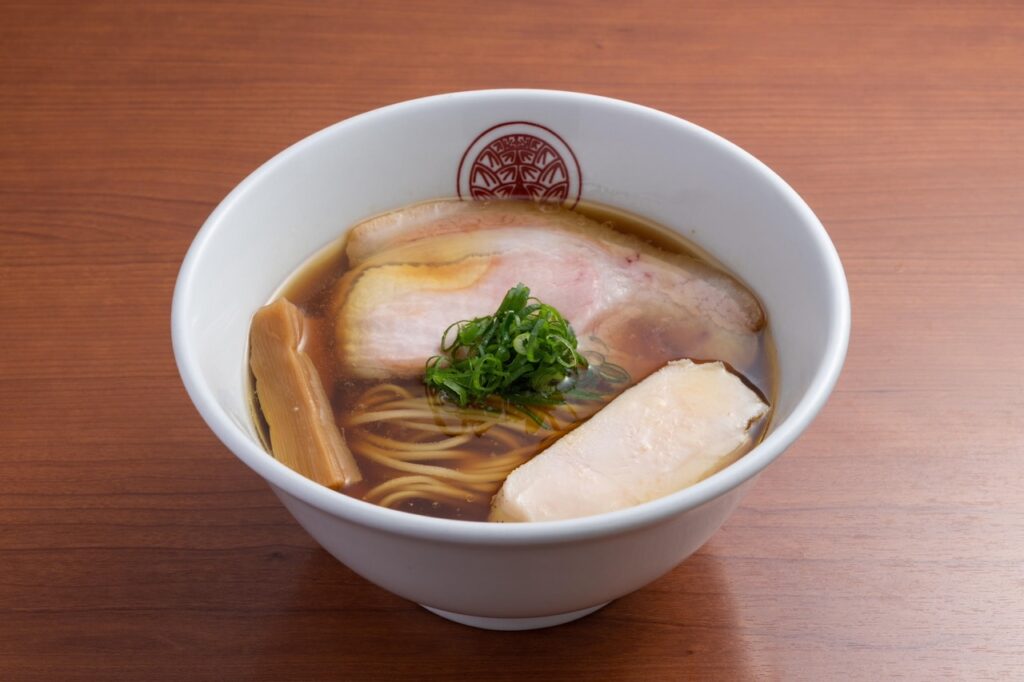
Chicken and soy sauce ramen (1,200 yen). A simple yet addictive dish with a direct taste of chicken and soy sauce. The pork and chicken chashu pork are available in two different flavors.

RAMEN DATA
▶︎ Tare (Kaeshi) / Soy sauce
▶︎ soup/chicken
▶︎ noodles/medium-thin straight noodles
Among the many ramen lovers who flock to Kyoto from all over the country, Takayasu is the originator of the cloudy soup that has been highly supported in Ichijoji, a particularly fierce battleground in the city. The soup, based on pork and chicken bones and cooked for a long time, is creamy but not greasy, and has many fans among men and women of all ages. Open until late at night, it is perfect for an after-work meal or to finish off a night of drinking.
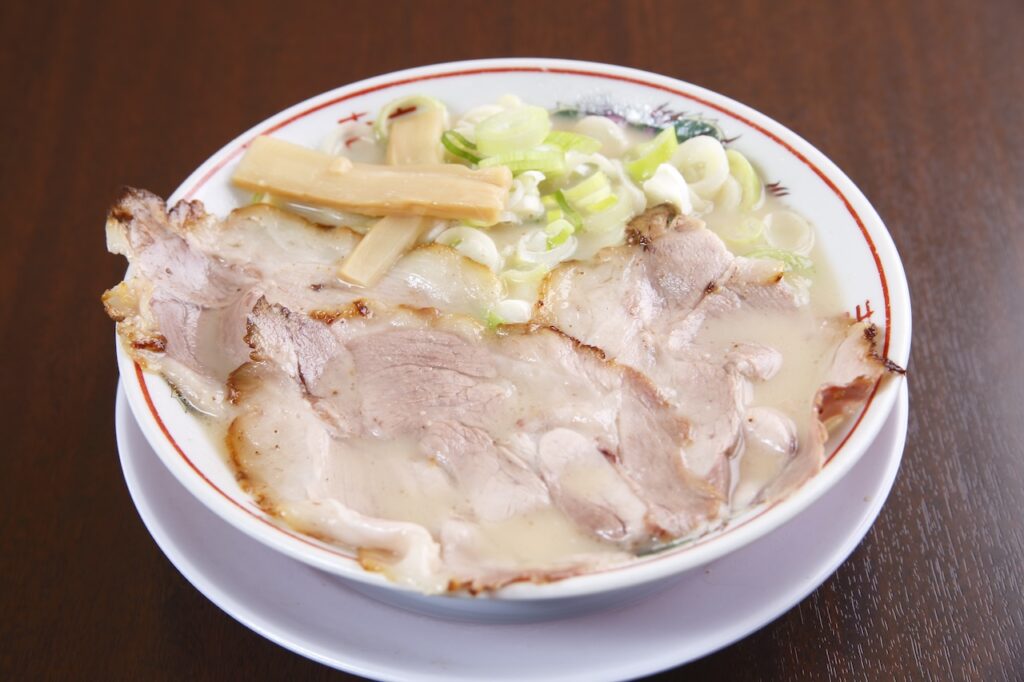
Chinese noodles 920 yen. Custom-made noodles that have been carefully considered to be compatible with the soup are well mixed with the mild, milky soup.

RAMEN DATA
▶︎ Tare (Kaeshi) / Soy sauce
▶︎ soup/chicken bones, pork bones
▶︎ noodles/medium-thin straight noodles
This is the second branch of the popular ramen restaurant "Menya Kyokudori" in Ichijoji, Kyoto. The special feature of this ramen restaurant is the super thick, viscous, meaty, muddy chicken white soup with condensed chicken flavor. The soup is surprisingly thick and viscous, but the aftertaste is not persistent, so you can enjoy it all the way through to the end. The same flavors as the main restaurant are available, such as aka-tadashi with a large amount of chili peppers, kuro-tadashi with homemade chili oil, and a limited quantity of chicken tadashi ganro, but the chicken tadashi tsukemen, which is only available at the Enmachi branch and uses extra thick, sticky noodles, is also popular.
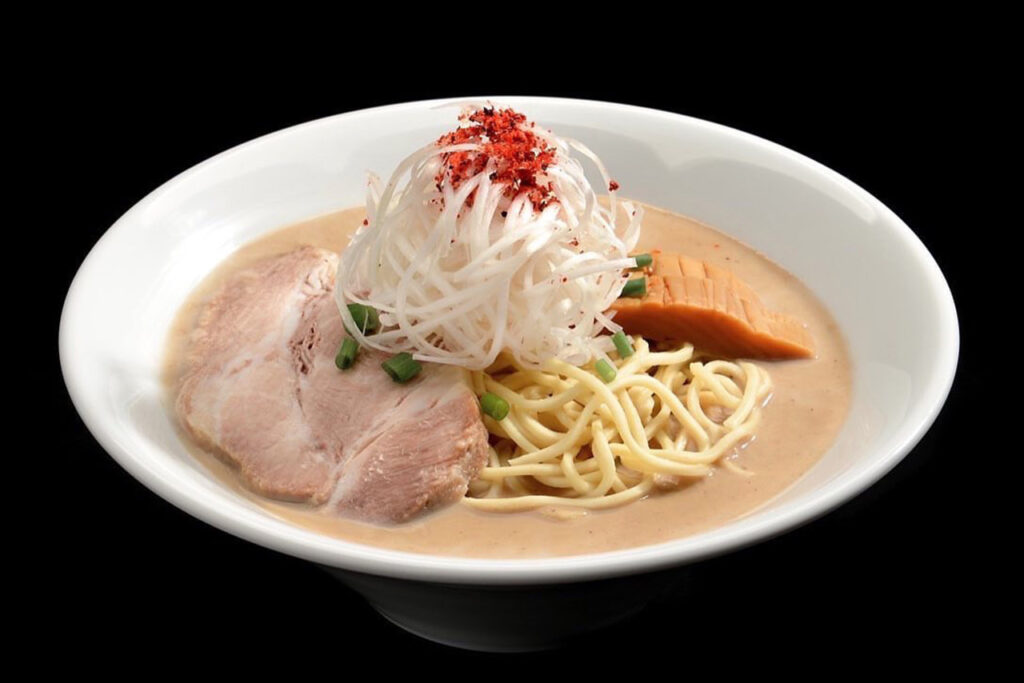
Chicken soup with chicken (¥1,000). Firm, medium-thick noodles and pickled bamboo shoots have a presence as strong as the soup.

RAMEN DATA
▶︎ Tare (Kaeshi) / Soy sauce
▶︎ soup/chicken
▶︎ noodles/medium-thick straight noodles
Tsukemen specialty restaurant boasts of its special noodles. The buckwheat-like brown noodles are made from stone-ground whole wheat flour produced in Nagano Prefecture. The thin, smooth noodles are a perfect match with the tsukemen (dipping sauce) made from the delicious flavors of chicken and seafood. Please refer to the recommended way of eating the noodles posted in the restaurant, and enjoy changing the taste by adding onion, sudachi or black shichimi (seven spice flavors).
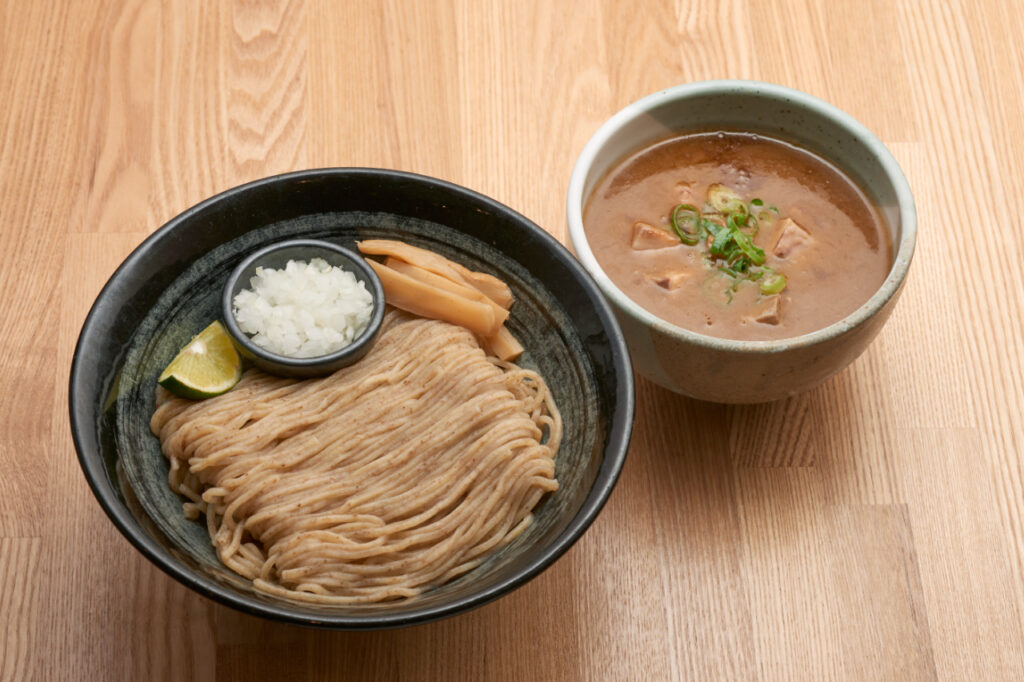
Tsukemen (chicken and seafood) in a rich chicken and seafood broth with special wheat-flavored noodles is served in a bowl. The remaining soup can be made into a pot on the table, so you can enjoy it to the last drop.

RAMEN DATA
▶︎ Tare (Kaeshi) / Soy sauce
▶︎ soup/chicken broth, seafood
▶︎ noodles/medium-thin straight noodles
Nabura is a ramen restaurant run by the owner, who has 35 years of experience as a Japanese chef in Kyoto. The soup, which is flavored with kelp and mackerel broth, contains no chemical seasonings, is low in salt, and is light enough to be consumed down to the last drop. It is rich, but at the same time, it is gentle on the body. It is also fun to pursue your own taste by using sansho (Japanese pepper) and spicy miso (soybean paste) on the table.
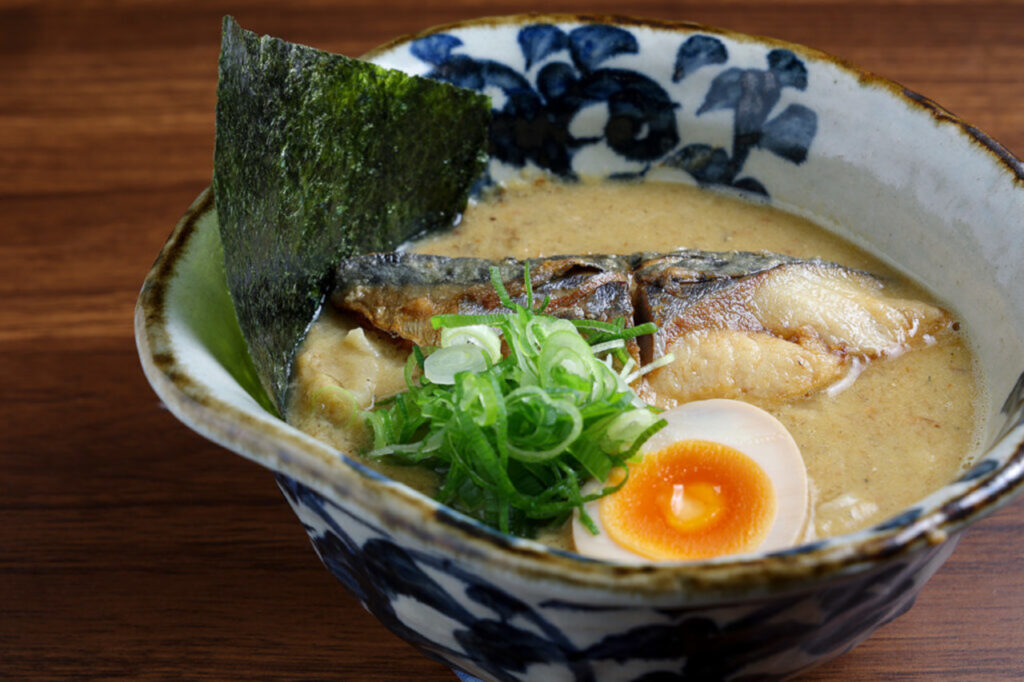
Ramen: 940 yen. Seafood-based ramen with deep flavorful kelp and mackerel broth and floating fried mackerel tatsuta-age (mackerel) is the talk of the town!

RAMEN DATA
▶︎ Tare (Kaeshi) / Soy sauce
▶︎ soup/seafood
▶︎ noodles/medium thick wavy noodles
Noodle House Nokonomeya is a popular restaurant that boasts a clear soup made from 100% jidori (local chicken). The soup, made using only gara, whole chicken, and water, maximizes the flavor of the chicken and goes perfectly with the homemade noodles made of domestic wheat. The low-temperature-cooked chicken chashu pork and pork roast are grilled over a fragrant charcoal fire, providing a well-calculated taste and aroma. In addition to the signature Jidori Soba, Chicken Hakuchu Soba (1,300 yen) and Jidori Shio Soba (1,400 yen) are also popular.
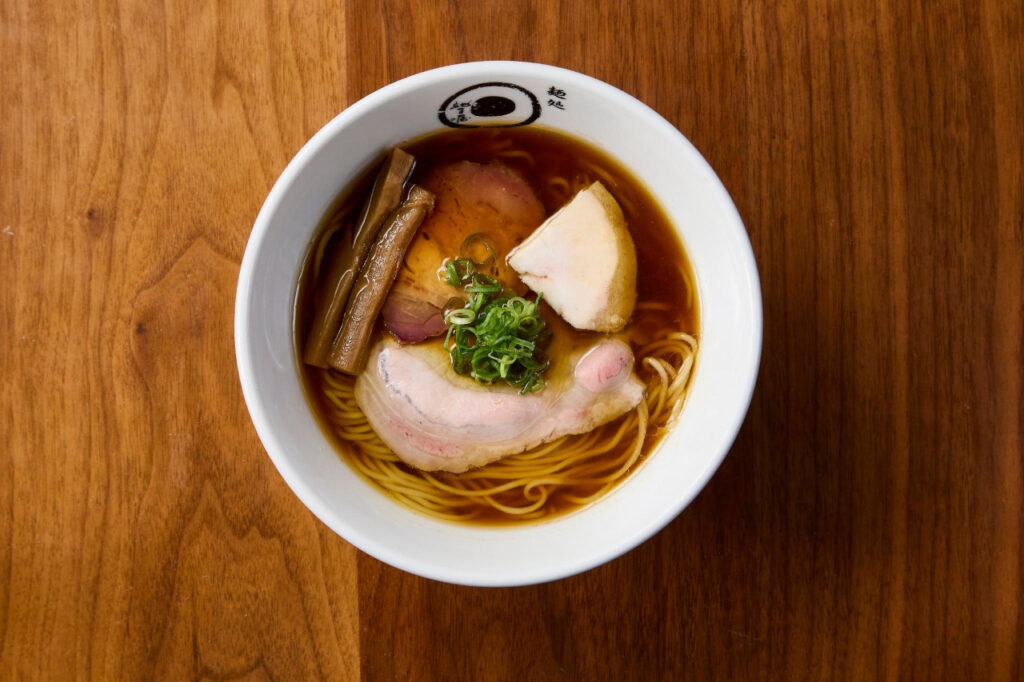
Jidori Chicken Soba Noodle 1,300 yen. The sharp soy sauce aroma further enhances the chicken flavor.

RAMEN DATA
▶︎ Tare (Kaeshi) / Soy sauce
▶︎ soup/jidori
▶︎ noodles/straight
Ramenya Fujitora" attracted a great deal of attention upon its opening in 2023. The owner, who was trained at Ramen Tohichi, runs the restaurant and makes the noodles in-house every morning, emphasizing the aroma of wheat. The soy sauce ramen (1,100 yen), a blend of six different kinds of soy sauce, is a dish in which the noodles are harmonized with the clean broth made from chicken stock and pork stock. The restaurant may close as soon as it is sold out, so early arrival is recommended.
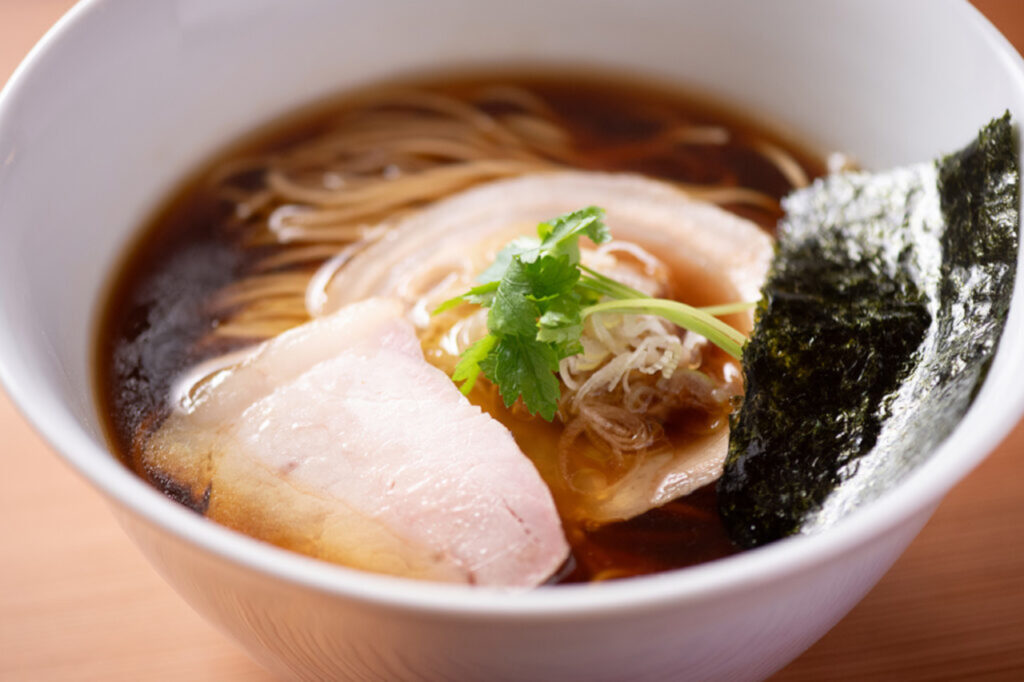
Soy Sauce Ramen (noodles) 1,100 yen. A blend of six kinds of soy sauce based on soy sauce from Kaneiwa Soy Sauce in Wakayama and Suehiro Soy Sauce in Hyogo. Two types of pork chashu (pork cut from Kagoshima's Miyu pork) are available: pork thigh and pork belly. Homemade wontons for 350 yen are also recommended.

RAMEN DATA
▶︎ Tare (Kaeshi) / Freshly Fried Soy Sauce
▶︎ soup/Jidori chicken, pork bone
▶︎ noodles/medium-thin straight
[Ramen Nagata, located near Kyoto University of Art, is a ramen restaurant opened by the owner who is a genuine ramen lover. The ramen is characterized by its gentle broth made from chicken stock, which is a speciality of the shop. In addition to the standard soy sauce ramen for 800 yen, the soy sauce special with plenty of ingredients for 1,100 yen and the service menu item, aburasoba for 500 yen, are also popular. Try the ramen loved by customers in Mototanaka.
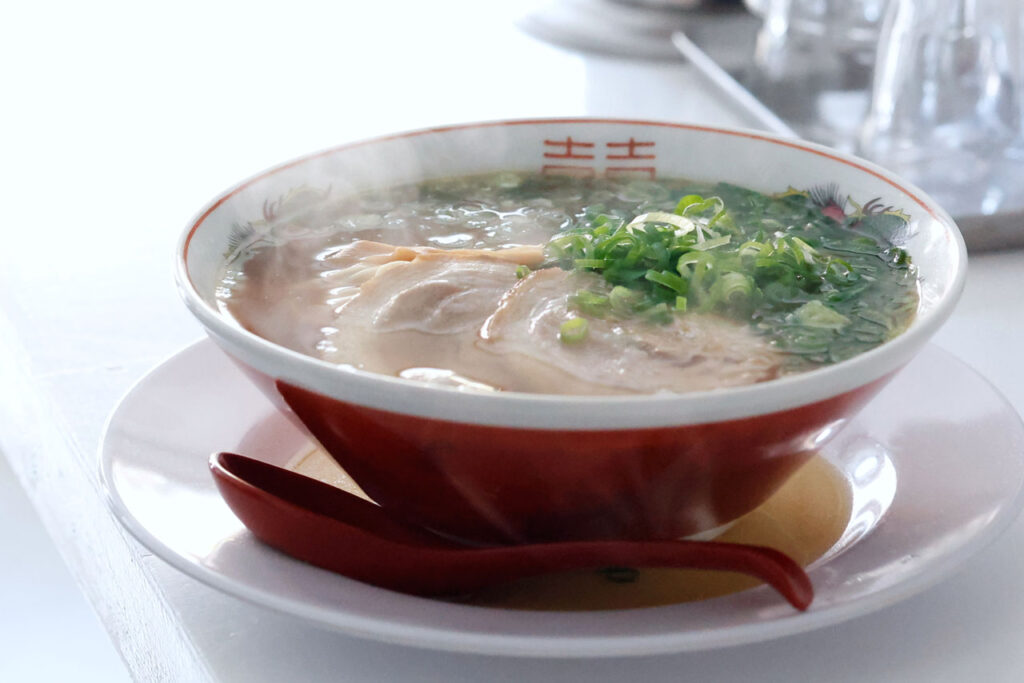
Soy sauce ramen 800 yen. The soup is made with a lot of chicken stock, the owner's speciality, and moderately firm straight noodles. The atmosphere of old-fashioned Chinese noodle soup is comforting.

RAMEN DATA
▶︎ Tare (Kaeshi) / Soy sauce
▶︎ soup/chicken-gara
▶︎ noodles/medium-thin straight noodles
This ramen restaurant is tucked away in a narrow alley near Karasuma Takoyakushi. The soup is made from pure Nagoya Cochin and noodles made by Kehge, a long-established noodle manufacturer in Kyoto. The regular menu includes two kinds of ramen named "Onibara. Topped with homemade pork chashu pork from Kyotanbakogen pork and onions, you can enjoy the exquisite harmony of the soup. On rainy days, you may come across a limited lemon ramen.
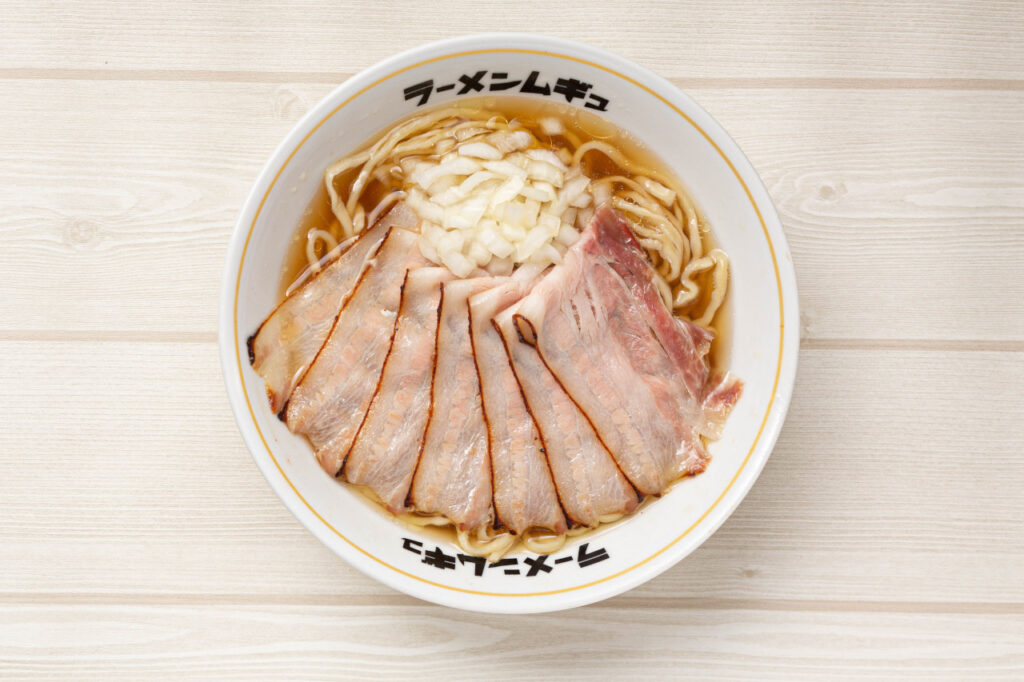
Oni bara white 1000 yen. Golden soup combined with light soy sauce-based sauce has a clean and tasty flavor.

RAMEN DATA
▶︎ Tare (Kaeshi) / Soy sauce
▶︎ soup/chicken
▶︎ noodles/flat hand-rubbed noodles
Ramen Miyagi is owned by the owner of Ramen Miyagi, who trained at a famous restaurant for 10 years. The soup is based on pork bones, blended with the sweetness of the fat from the pork chashu (pork cutlet), and harmonized with a crisp soy sauce. The best way to enjoy it is with Niigata Koshihikari rice. The ramen with extra meat (1,400 yen), in which the chashu pork is layered like petals, is also popular. Open from 7:00 a.m., it is perfect for morning noodle drinkers.
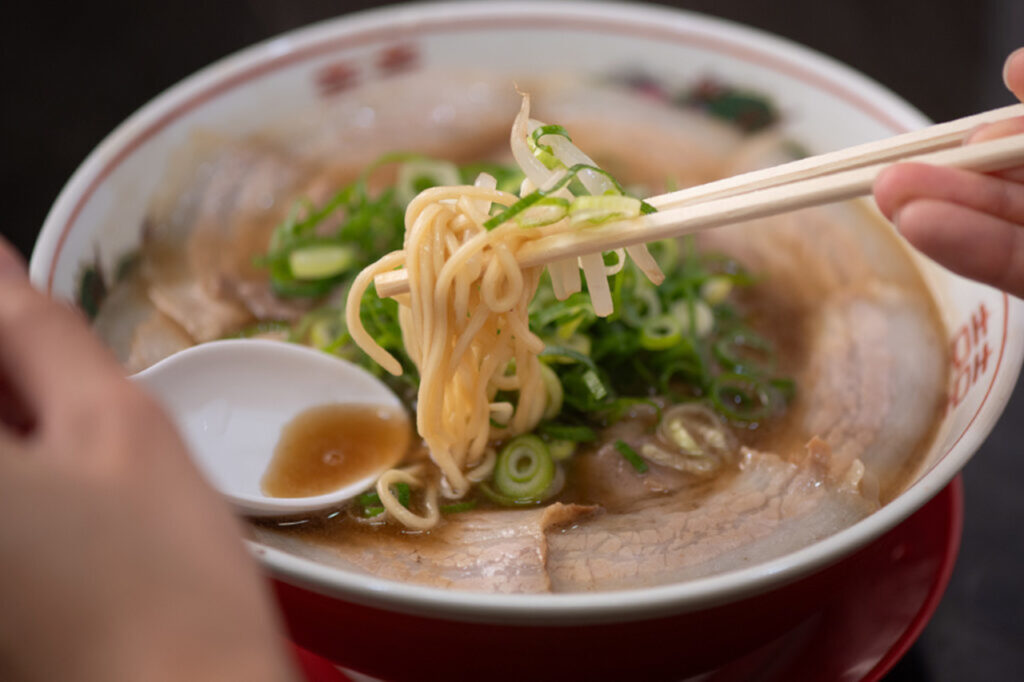
The special ramen is 1,000 yen. The pork bone soup with a sharp and crisp soy sauce as a spice sauce is matched with the medium-thick straight noodles of "Menya Ezhou". Toppings include 8 pieces of pork chashu pork, green onion, bean sprout, and a small amount of pork.

RAMEN DATA
▶︎ Tare (Kaeshi) / Soy sauce
▶︎ soup/pork bone
▶︎ noodles/medium-thick straight noodles
Tsukemen Kirari is one of the best Tsukemen specialty stores in Kyoto. The combination of chewy, extra-thick noodles and thick dipping sauce attracts many fans, and even on weekdays there is a constant flow of customers. The thicker the noodle is chewed, the stronger it becomes, enhancing the richness of the dipping sauce. The potage-like thick dipping sauce has an exquisite finish, rich but not cloying, with a subtle aroma of seafood flavor. The official X website regularly announces limited-time-only menu items, so be sure to check it out before you visit.
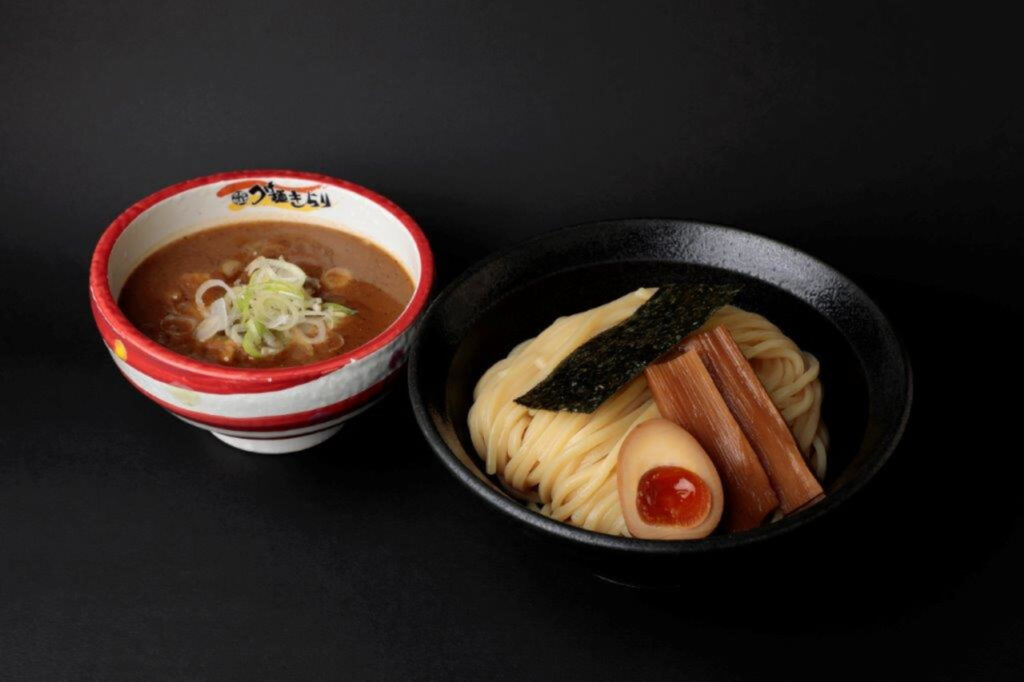
Seafood Tonkotsukotsu Tsukemen (large) 1,150 yen. The combination of the thick dipping sauce, which is a cross between seafood and pork bone broth, and the homemade chewy, extra-thick noodles is a masterpiece. The soup can be freely arranged by pouring sudachi vinegar over the noodles or topping them with fresh garlic. Enjoy the soup at the end!

RAMEN DATA
▶︎ Tare (Kaeshi) / Soy sauce
▶︎ soup/pork bone, seafood
▶︎ Noodles/straight (very thick)
Menya Yuko is known as a popular restaurant where you have to wait in line. The restaurant offers three types of ramen: madake, a ramen layered with the flavor of bonito and kelp; kurochiku, a thick ramen; and awatake, a shellfish-based ramen. The most popular, Awatake, is a special soy sauce ramen with the concentrated flavor of oysters, clams, and shijimi clams. Enjoy this special bowl of ramen that captivates both locals and tourists alike.
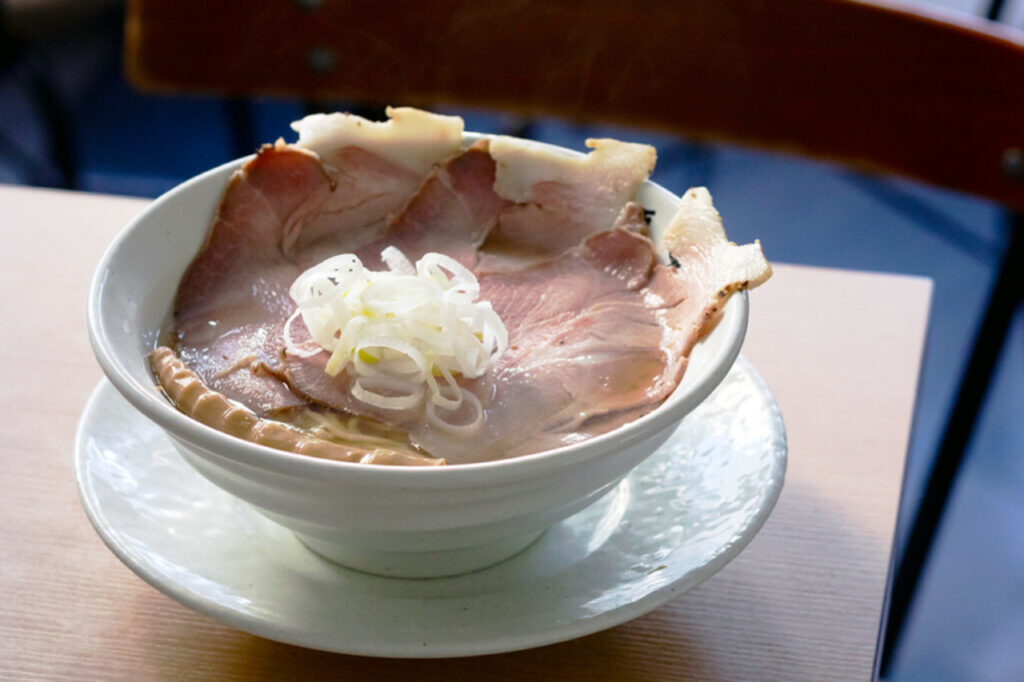
Awatake 880 yen. [The soy sauce from Sawai Shoyu Honten matches the three kinds of shellfish soup stock. The chewy noodles are also excellent.

RAMEN DATA
▶︎ Tare (Kaeshi) / Soy sauce
▶︎ Soup/Shellfish broth
▶︎ noodles/whole wheat medium-thick straight noodles
Eitaro, a popular restaurant that has operated for 40 years in Shijo-Karasuma, will move to Shijo-Omiya in 2024. The store's signature dish, yuzu ramen, combines pork back fat and chicken stock with a generous amount of yuzu (yuzu citron) to create a refreshing yet rich soup that makes you want to drink it all up. The addition of bonito dashi, which is a unique twist on the soup that originated at an udon restaurant, gives the soup a familiar and comforting taste that will soak into your body.
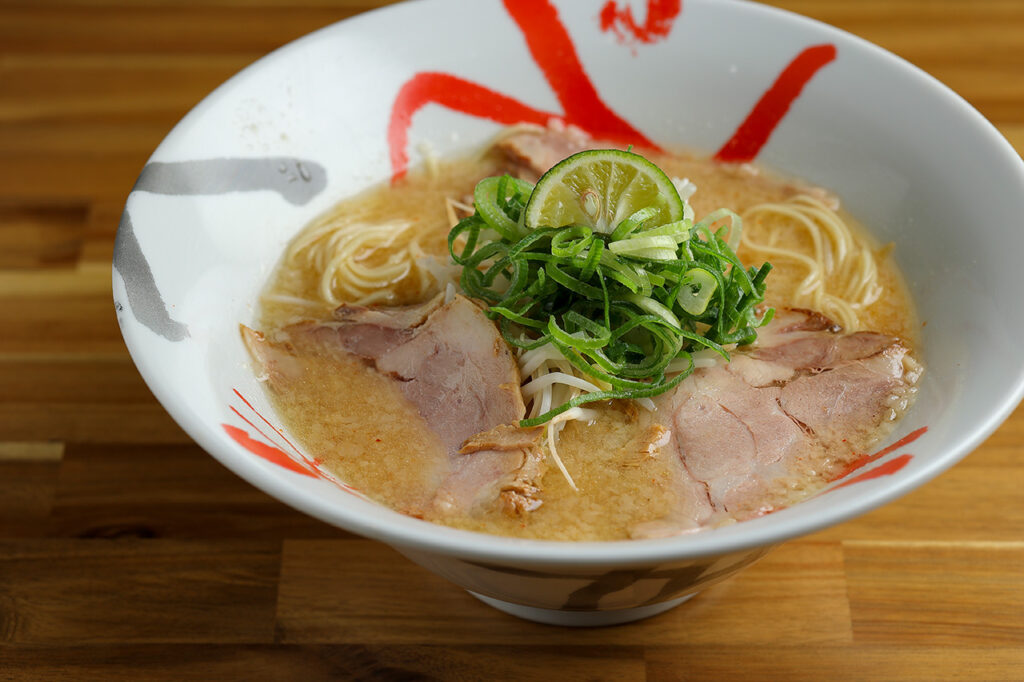
Yuzu Ramen (ordinary), which 80% of the customers order, is 1100 yen. The thin noodles, which are made with less brine and have a strong flour flavor to match the soup, were developed by a long-established noodle maker in Kyoto over a period of three years.

Thank you for reading this article. We would love to hear about your recommendations for ramen restaurants in Kyoto that you would like to eat even if you have to wait in line!
We sincerely look forward to your responses!
Over 600 interviews per year! An order site carefully selected by the editors who knows Kyoto and Shiga.
nowOfficial LINE friend registration500 yen OFF coupon is being issued!
Distributed every Friday morning at 8:00 am! From new restaurant information to event information that we want to share with you, We deliver articles about Kyoto that are useful to know. About 20,000 people have registered.Click here to add a friend!
 News
News Feature article
Feature article Featured event
Featured event